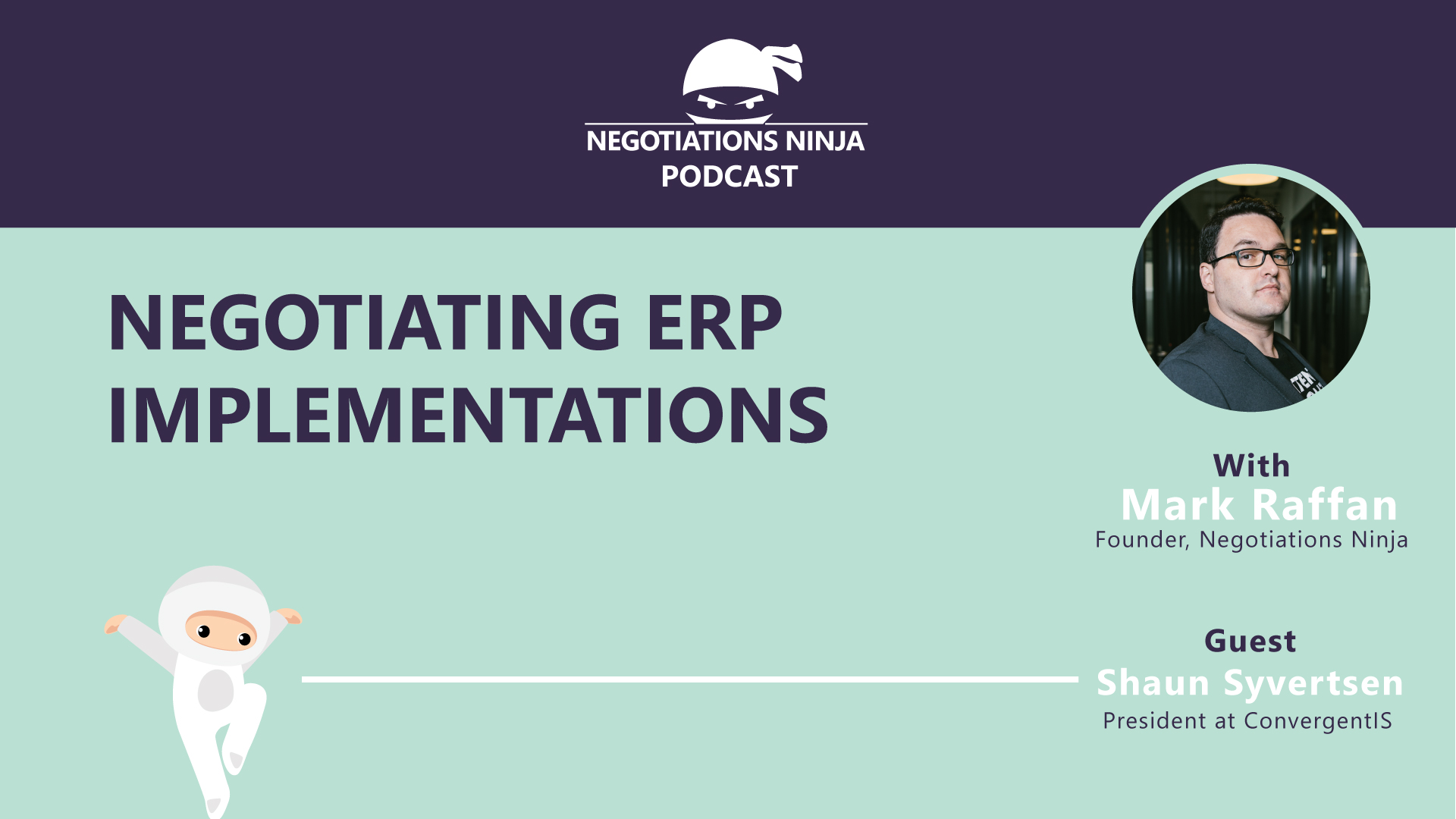ERP implementation is a difficult and lengthy process that can make or break an organization. So how does an enterprise roll out the implementation effectively and efficiently? What processes or procedures can smooth the transition from an old system to a new one? Shaun Syvertsen with ConvergentIS shares how to make the process easier and how to avoid common failure points. He emphasizes the necessity of getting high-level management involved and invested in the process. Shaun points out that their involvement is a gamechanger. With it, you typically see a successful ERP implementation. Without it, the process is sure to end in disaster. So how do you reach success? Listen to find out.
Outline of This Episode
- [2:33] Shaun Syvertsen’s background
- [3:55] How to make the ERP implementation process easier
- [17:41] The nightmare situations of ERP implementations
- [26:54] Mitigate disaster with risk-management procedures
- [32:05] How to hire a third-party to aid in the implementation
- [38:35] What are the most common failure points to be aware of?
- [46:09] Connect with Shaun Syvertsen
How to make the ERP implementation process easier
Any organization has policies, procedures, and processes to follow in regards to making a purchase. The amount of the purchase adds a further challenge—if it’s over $10,000 and may be useful to the company for more than a year—it’s treated as an asset. Which comes with the potential for legal review, accessibility guidelines, etc. to come into play. These are processes procurement teams need to follow and train people on. But it’s often unclear and difficult to follow.
How do you roll out a brand new purchasing policy to hundreds of staff that do requisitions? According to Shaun, you do it by making it so easy to use and follow that you hit ‘next’ and answer a question. You lay things out in a step-by-step guided process that removes complexity. ConvergentIS works to bring the consumer and user experience and apply it to the enterprise. When you can still complete complex processes in this way—using a simple set of logical questions—you’re giving your company something that just lets them be successful. The adoption and buy-in of a new process also increase.
Successful ERP implementation includes…
How can procurement people ensure that ERP implementations are successful? What do we need to look for from the beginning and throughout the process? Shaun points out that procurement plays a critical role in the process and is in a unique position to hold the organization accountable. Have you done your homework? Do you know what you’re looking for? Do you have leadership that is highly engaged in what’s going to happen?
Shaun points out that C-level management is the driving force behind successful ERP implementation. They’re driven to make sure it will meet the needs of the business and advance the business goals. Without their involvement and deep engagement, it won’t succeed.
Shaun also emphasizes that decisions need to be business-driven. The system itself must be an outcome derived from the broader business goal. Which is why prototyping is so important. Before you even look at procuring something, Shaun recommends you go, find, and study at least 5 ERP disaster case studies (i.e. Target in Canada). Shaun shares the importance of prototyping—so continue listening.
Applying the ‘Pre-Mortem’ concept to ERP Integration
Shaun notes that we tend to walk into projects with rose-colored glasses on. But you must employ risk-management at the beginning of the process. Shaun recommends a tool referred to as ‘Pre-Mortem’. It consists of asking and answering questions about what could go wrong in the process.
Six months from now, if everything goes wrong when the system goes live, what happened? Were accounting records messed up and not included in the transfer? Asking worst-case scenario questions before the project commences can help you mitigate disaster and put a risk-management plan in place.
What else does Shuan recommend to make the implementation a smooth process? Can you hire someone to clean your data prior to a transition? Keep listening to hear his thoughts.
How to hire a third-party to aid the process
Who is the business leader? The person who has the ultimate decision-making power throughout the process? Shaun notes that you must make sure that person is clearly identified and that there are opportunities created for the third party to really get to know them.
Sometimes procurement accidentally treats people as though they were pencils, bar codes, or ingredient lists. It’s about creating discussions to gauge the fit. Think about the people you’re talking with. Are they pre-sales? Or are you talking to the person who would be there to drive the execution you’re looking for?
There may be teams of hundreds involved in ERP implementation. On a smaller million-dollar ERP implementation there will still be dozens of people involved. So it’s important to get to know the leaders who will help drive your success. Make sure you’ve considered how you will be the one watching the henhouse. Have your own independent project manager. Consider your size relative to the SI because it drives time, attention, and the caliber of resources assigned to your project.
What are the most common failure points your company needs to be aware of? How do they impact the ERP implementation? Shaun shares the other factors that drive the success or failure of the ERP implementation. Listen closely to take advantage of his expertise in the field.
Resources & People Mentioned
- ConvergentIS
- SAP ERP
- The Checklist Manifesto
- Target’s failed ERP Implementation
- Gary Klein Performing a Project Premortem
Connect with Shaun Syvertsen
Connect With Mark
- Follow Negotiations Ninja on Twitter: @NegotiationPod
- Connect with Mark on LinkedIn
- Follow Negotiations Ninja on LinkedIn
- Connect on Instagram: @NegotiationPod




